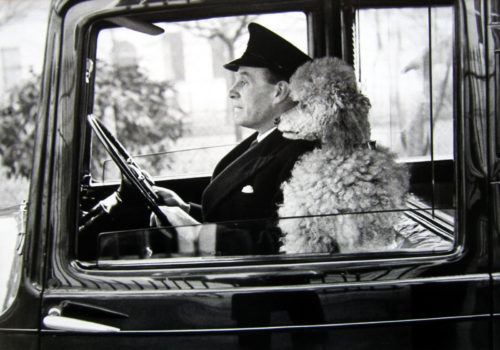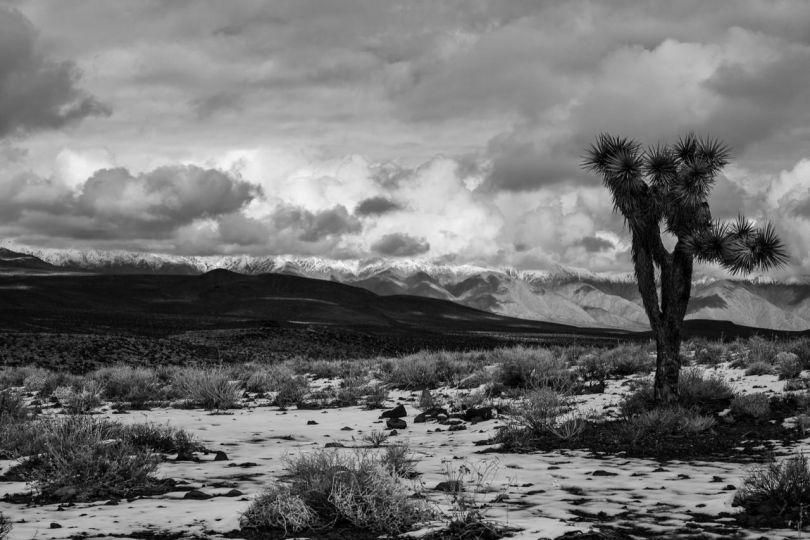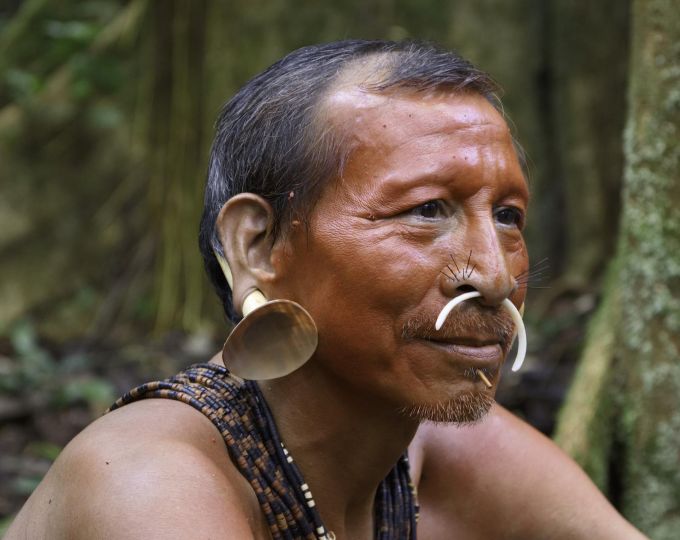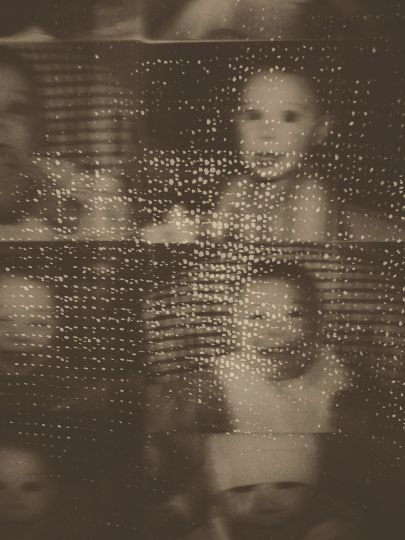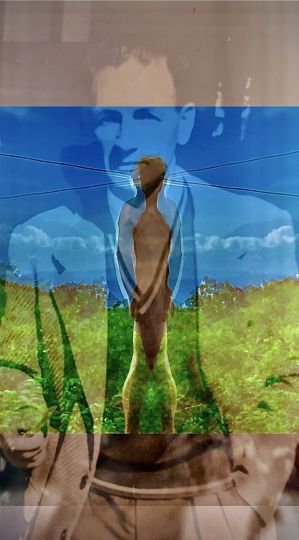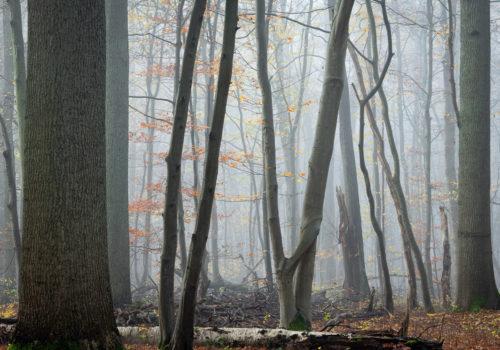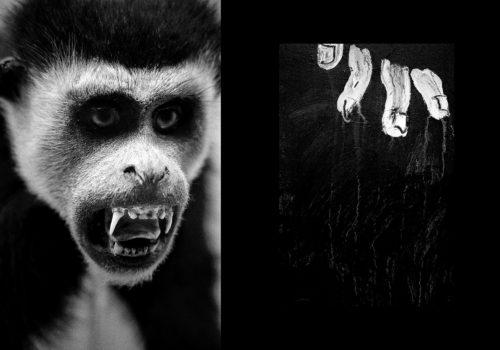This is the fourteenth installment of the online series by Peter Fetterman Gallery called the Power of Photography highlighting hope, peace and love in the world. We invite you to enjoy and reflect on these works during this time.
Thurston Hopkins (1913-2014)
La Dolce Vita, Knightsbridge, London, 1953
© Estate of Thurston Hopkins/Courtesy Peter Fetterman Gallery
Thurston Hopkins and his wonderful wife and fellow photographer, Grace Robertson, were always so gracious whenever I came to visit them in their cottage in Seaford, near the West Sussex coast. I would always discover new gems from their archives.
This photo has always put a smile on my face. I asked Thurston how it came to be and he told me the story. He was in Knightsbridge and wanted to pick up some special treats for Grace from the celebrated food hall at Harrods, the posh, fancy, high-end department store. He picked up the surprise delights and as he left the store he saw this parked car with the chauffeur and large poodle inside. Like all great photographers he was always prepared for the unexpected “gift” life sometimes gives you and he was ready to receive it.
One can only imagine a mental picture of the dog and driver’s owner. I always think of it as the “Driving Miss Daisy” shot.
Max Yavno (1911-1985)
Powell Street, San Francisco, 1947
© Estate of Max Yavno/Courtesy Peter Fetterman Gallery
San Francisco has always been a magical city for me. I get to ditch my car and walk, walk, walk even up those steep, steep hills. I have had the opportunity to go there often working with great photographers based there like Ruth Bernhard and Fred Lyon but also to exhibit at wonderful art fairs there and visit sophisticated, tasteful clients.
Max Yavno certainly had great technique. But also a great eye for composition. You see it in this, one of his greatest images and one of the greatest photographs ever shot there. The sense of precision, symmetry, shape and patterns flow throughout the image. Max started his life as a social worker and ended up being the President of the Photo League in New York before moving West so his sense of empathy was ingrained into his art.
He captures the hustle and bustle of the city and even after living with this image for many years I always notice something fresh in it. It is truly multi-layered with many stories flowing into each other. Honestly all human life is here.
As his good friend and fellow great photographer, Aaron Siskind, said about him –
“In a lifetime of devotion to excellence, his passion for the well-made object has moved craft to art, transformed the ordinary to a luminous, ordered presence.”
Andre Kertész (1894-1985)
Martinique, 1972
© Estate of Andre Kertész/Courtesy Peter Fetterman Gallery
Andre Kertész took this haunting photograph when he was 78 years old. He was on holiday with his wife Elizabeth in Martinique.
The man from the next door hotel room stepped out onto the shared balcony separated by a common glazed glass partition. He took the photo of his neighbor looking out to the sea.
I have always interpreted this image as a self portrait within a portrait, a personal story within a story. I sense Andre contemplating his own life, his thoughts of his past as well as his future.
It’s primal and eternal.
I think it is one of the most moving images in the history of photography and one of Kertész’s greatest photographs. It is proof that a truly great artist still maintains the spark of genius however old he or she may get.
Nat Fein (1914-2000)
The Babe Bows Out, June 13, 1948
© Estate of Nat Fein/Courtesy Peter Fetterman Gallery
Being born in London I knew a little bit about soccer and cricket but not much about baseball. We used to play as kids a variant known as “rounders. But when I moved to America I soon became aware of the importance of the sport of baseball, not just as a game but as a huge part of the ethos and mythology of America. It has fascinated me ever since reinforced by the wonderful Ken Burns “Baseball” series on PBS with it’s brilliant use of photography.
Even I know about the iconic status of the Babe and how important this photograph is. It was the first Sports photograph to win a Pulitzer Prize.
June 13th, 1948 was a special day in the history of the game. It was the 25th Anniversary of Yankee Stadium and the day Babe Ruth was being honored and his celebrated Number 3 was being retired. A special day for Nat Fein too. He was a well respected staff member of the New York Herald Tribune. The usual key sports photographer had called in sick that morning. The editor tells Nat to get over to the stadium and get something great for us.
Babe was in bad shape, having been battling cancer for several months before. Emotion filled the stadium. The crowd sensed that this would probably be the last time they would see their hero in public. All the press photographers gathered in front of him. Nat Fein’s talent and instinct told him to do something less obvious…so he shot him from behind and made history.
Babe died two months later…
I love baseball now. I just love the spirit of it. It’s really about life with all it’s beauty and pain.
And as the Babe said himself, “Never let the fear of striking out keep you from coming up to bat.”
George Tice (b. 1938)
White Castle, Route #1, Rahway, New Jersey, 1973
© George Tice/Courtesy Peter Fetterman Gallery
I have seen grown adults cry in front of this photograph.
In my pre-Covid lifestyle we would be exhibiting at 6+ art fairs a year, all over the world.
Particularly in our US fairs whenever this image was on display it would elicit the most emotional outburst. People would tell us how their parents used to take them on a special outing to eat at a White Castle, especially our East Coast clients. It seemed to be one of their most vivid childhood recollections, like getting their first dog or bicycle.
So this is not just a beautiful architectural rendition. So many stories emanate from these walls. One of the reasons, of course, is that it is an exquisitely hand-crafted “tour de force” print made in the 20th Century. George is a true master in the dark room. The print glows and is so luminous. It has a stillness and almost “sad beauty” to it much as an Edward Hopper painting. In 1921 a young man Billy Ingram from Wichita, Kansas borrowed $700 from his family and set up the first one. His innovation was to produce small square hamburgers so easy to eat they were dubbed “sliders” and sold by the stacks. All pre-vegan, artisanal “farm-to-table” as we say now.
Yes, it evokes another world and another time but this image is a prime example of photography as memory.
Danny Lyon (b. 1942)
Bob Dylan Behind the SNCC Office, Greenwood, Mississippi, 1963
© Danny Lyon/Courtesy Peter Fetterman Gallery
I find it hard to believe that this photograph was taken 57 years ago. It seems as potent and as relevant as if it had been shot only yesterday. Many of the circumstances surrounding the photograph have not changed that much. It seems the core issues are still to be resolved.
Danny Lyon is a much respected photojournalist. I think he would not feel too comfortable being called an artist but rather be known as a social activist. He was a staff photographer for the Student Non-Violent Coordinating Committee photographing civil rights demonstrations against segregation in the American South.
Bob Dylan had just given a concert in a cotton field. He sang “Only a Pawn in Their Game” about the murder of NAACP leader Medgar Evers. After the concert he was relaxing on the back porch of the SNCC office. Danny seized the moment.
So much to think about in this image, in its multi-layered story telling. I’m reminded of Bob Dylan’s words,
“A man is successful if he gets up in the morning and gets to bed at night and in between he does what he wants to do.”
William Garnett (1916 – 2006)
Snow Geese in Flight with Reflection of the Sun over Buena Vista Lake, California, 1953
© Estate of William Garnett/Courtesy Peter Fetterman Gallery
William Garnett was a one-of-a-kind photographer. Most landscape photographers are firmly rooted on the ground, patiently waiting for the right cloud or the right wave or the right light to approach their lens. William took to the skies to explore his vision. He did not have that luxury of time. He had to make split second decisions and react immediately to changing light conditions and disappearing shapes as everything was forever changing immediately around him. Previously, most aerial photography was just functional in nature and was done for strictly utilitarian purposes – mapping and surveying, urban planning or at times of war important surveillance of the enemy.
Garnett turned aerial photography into art like no one before or since…
There is a wonderful sense of wonder about his images. He too, like Ansel Adams, was an early proponent of the importance of protecting the environment and proper land use. His chief collaborator was his Cessna 170-13 small plane which he had owned since 1956.
Ansel Adams summed up his friend’s accomplishments so well,
“It may be trite to think of his photographs as revelations but that is exactly what they are.”
And as William said,
“To fly in a small plane and see the variety of beauty the USA has to offer is a thrilling experience. Indeed with such splendor spread out before me I often feel guilty that I am up there alone.”
He may have been alone, but he left us an extraordinary body of work to dream on and be amazed by.
Michael Kenna (b. 1953)
Torii Gate, Study 3, Shosanbetsu, Hokkaido, Japan, 2014
© Michael Kenna/Peter Fetterman Gallery
Michael Kenna’s photographs from Japan are among some of his strongest. The photographs made of the isolated Torii gates at sea have such a strong and haunting presence, yet are so calming and surreal. The Japanese Torii gate symbolically marks the transition from the mundane to the sacred.
Kenna knows no limits with his subject matter, yet his approach to photographing has always been a Zen-like, holistic process of connecting to the world around him. Using minimalism and long camera exposures, he captures the passing of time within a single image, creating very surreal, haunting and “dream-like” scenes of nature.
I’ve always felt that a photographer’s lasting importance is directly tied to the influence on other photographers created by their work. Michael Kenna’s vision has been surprisingly consistent for nearly five decades. Not only has his work influenced thousands of photographers, but also the indistinguishable “look” to his photographs can even be found mimicked with Instagram filters and digital camera pre-set styles. His work has often been imitated, yet that does not diminish the lasting importance of his photographs. Kenna remains one step ahead with his unique vision and continues to be one of the most prolific photographers working today.
Bravo Michael.
Fred Lyon (b. 1927)
Opening Night at the Opera, San Francisco, 1949
© Fred Lyon/Courtesy Peter Fetterman Gallery
Eugene Atget was the great chronicler of Paris, Berenice Abbott was the great chronicler of New York and Fred Lyon has very much the city of San Francisco to his own. No one has captured this special place with all its magic and mood better than Fred has.
Today is Fred’s 96th birthday and I want to salute his special talent and accomplishments not only as a great photographer but also as an extraordinary human being. His amazing generosity of spirit which he has exuded over a long career, more than 7+ decades in the making, has been a source of constant inspiration to me since we first met many years ago. His eye and his heart have enriched everyone who have been so fortunate to have known him, no more so than myself, his biggest fan.
He inhabits “The cool, grey city of love “ as his good friend, Herb Caen, once described their hometown.
Colin Jones (b. 1936)
Newcastle, Banwell, Scotswood, 1963
© Colin Jones/Courtesy Peter Fetterman Gallery
The film and musical of “Billy Elliott” could have been based on Colin Jones’s life. Colin came from a tough London working class, turbulent background and found some kind of stability by being enrolled in the Royal Ballet training school and then invited into the Royal Ballet proper and traveled the world as a dancer with that distinguished much respected company. On his travels he discovered photography and found he had a natural talent for it and started working with The Observer newspaper as a valued photojournalist in 1962. He was a natural story teller and was particularly attracted to stories about working class communities in Northern England. He knew he was living through a time of change that England was going through and that many of these communities would no longer survive the onslaught of modernization.
This is my favorite image of his which is not judgmental but has a deep sense of humanity and a moment of universal joy. The scene could have come out of a novel of D.H. Lawrence or George Orwell or out of all those wonderful English movies of the 1960’s that my generation grew up with, “Room at the Top,” “This Sporting Life,” “The Loneliness of The Long Distance Runner” and “Saturday Night and Sunday Morning.”
Peter Fetterman Gallery
2525 Michigan Ave, #A1
Santa Monica, CA 90404

